With just four days to go before Election Day, the battle for control of the U.S. Senate remains heated. Over the past two weeks, FixGov has offered analysis of ten key Senate races. Here are five major takeaways from the Race for the Senate 2016:
How much ticket splitting will we see?
According to an analysis by political scientist Gary Jacobson, only about 11 percent of voters in 2012 cast their ballots for a presidential candidate of one party and a Senate candidate of different party—the lowest rate since the American National Election Study began gathering such data in 1952. This is largely the result of the fact that today’s political parties are better sorted and more polarized; fewer voters, then, find that a presidential candidate of one party and a Senate candidate of the other both represent their views.
Will Donald Trump’s presence at the top of the ticket disrupt this pattern? Some political scientists have argued it’s possible, especially if voters expect Hillary Clinton to win and split their votes to “balance” the national government. As of earlier this week, moreover, Republican Senate candidates in eight of the ten races in our series were polling better than Donald Trump. (Missouri and Indiana are the only two outliers.)
Across the states in the series, the prevalence of ticket splitting is likely to vary. In North Carolina, for example, Jason Husser writes that, pre-election, ticket splitting there “doesn’t appear to be unusually high.” David Damore, meanwhile, writes from Nevada that the “relatively small share of Nevadans who are college educated reduces the pool of voters who might cross party lines this cycle.” At the same time, Tom Wood’s post on the Ohio election carefully documents Republican Senator Rob Portman’s success in outperforming Trump.
What challenges do candidates face when running for Senate in a presidential swing state?
There are certainly upsides to being a Senate candidate in a state on which one or both presidential campaigns are focusing their efforts. Recent work by political scientists Ryan Enos and Anthony Fowler, for example, suggests that targeting by presidential campaigns increased turnout by 7-8 percentage points in 2012.
At the same time, as our series contributors show, sustained attention by the presidential campaigns in one’s state can limit the ability of Senate candidates to dictate the terms of their own races. Our North Carolina preview, for example, discusses how, “when the state has multiple visits each week by Trump, Clinton, and their famous surrogates,” it is “very difficult for [Republican candidate Richard] Burr and [Democratic candidate Deborah] Ross to move the needle on their own.” Contrast that with Missouri, where Mary Stegmaier and Ashley Price discuss how neither Trump nor Clinton has spent much time in the state. Even the components of the race that involve the top of the ticket, then, can be fought much more own on the Senate candidates’ own terms.
Will women voters be pivotal in electing more women to the Senate?
Of the 20 major party candidates in the ten races in our series, seven—the Democratic candidates in Illinois, North Carolina, Pennsylvania, Nevada, and Arizona and both the Democrat and Republican in New Hampshire—are women. Currently, women comprise 20 percent of the Senate, a share that could increase if several of the female candidates in competitive races win. (Only one retiring female senator, Barbara Mikulski of Maryland, will be replaced by a man.)
While the election could make the Senate a more diverse chamber, most of the focus on gender among our FixGov previewers was at the voter, rather than candidate, level. For example, Dante Scala argues that in New Hampshire, “if [Democratic candidate Maggie] Hassan upends [Republican incumbent Kelly] Ayotte on Election Day, Planned Parenthood and well-educated female voters will be key reasons for her success.” In our North Carolina analysis, meanwhile, Husser highlights how “white female voters are the demographic most likely to determine the outcome of the race.”
Will outside money flowing into Senate races make a difference?
Nearly every expert discussed the role of “outside money” in their state’s Senate race. Exactly the shape of that outside money, however, varies from race-to-race. Some races have seen heavy involvement from the super PACs aligned with the two parties’ Senate leaders. In Pennsylvania alone, for example, the Democrats’ Senate Majority PAC have put over $19 million into the race, while its Republican counterpart, the Senate Leadership Fund, has invested over $11 million. In other states, meanwhile, groups organized around specific issues have been particularly active. In Missouri, where gun control has been a central issue in the campaign (thanks in part to a particularly memorable ad from Democratic candidate Jason Kander) has seen relatively heavy spending from the NRA and its lobbying arm, the NRA Institute for Legislative Action.
Data from Kantar Media/CMAG with analysis by the Wesleyan Media Project suggests that much of this money has been spent on television advertising. By late September, 52 percent of all pro-Republican Senate ads and 40 percent of all pro-Democratic Senate ads were sponsored by outside groups; both of these figures are record highs. Will all this spending make a difference? Political science research has suggested that while advertising’s effects at the presidential level are small and fade quickly, they can play a larger role when the candidates may be unfamiliar to voters or when one side has a significant resource advantage.
Do states’ choices about how to run their elections have consequences?
One week before Election Day, an estimated 26 million voters had already cast their ballots. Voters’ opportunities to vote early and to rely on other methods of “convenience voting” vary significantly across states, and the analyses in our series suggest that states’ choices in this area can make a difference. In Arizona, as Barbara Norrander points out, most of the “early” ballots go to permanent absentee voters, limiting observers’ ability to draw conclusions about the shape of that race from ballot requests. In Illionis, meanwhile, Brian Gaines notes that the popularity of early voting helps “mitigate against a late, poll-deying swing.” And in North Carolina, where any voter can vote absentee, Jason Husser notes that a Democratic advantage in absentee ballot requests “could be due to greater Democratic enthusiasm [or] it might also be attributed to coordinated efforts by Democratic campaigns to encourage absentee voting in response to the now defunct voter ID law.”
Political science research suggests that our experts are right to focus on the role of states’ election administration choices. Scholars have found that the availability of early voting generates more media coverage, even if it may not increase turnout when implemented on its own. In addition, states’ decisions about how to structure the early voting period can affect who participates in the election.
The Brookings Institution is committed to quality, independence, and impact.
We are supported by a diverse array of funders. In line with our values and policies, each Brookings publication represents the sole views of its author(s).
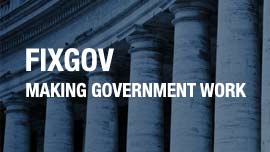
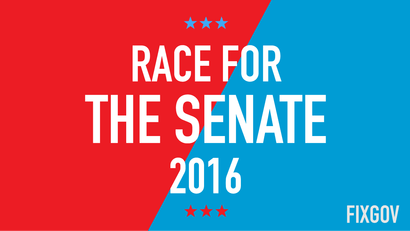
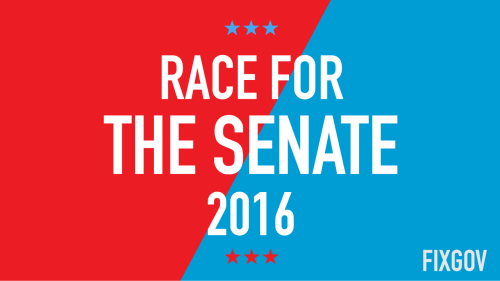
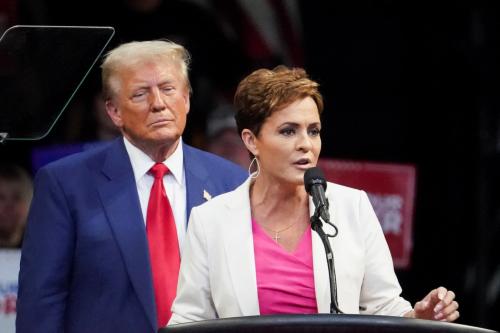
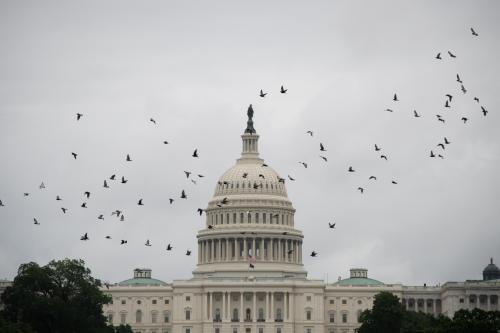



Commentary
Race for the Senate 2016: Five things to look for on Election Day
November 4, 2016